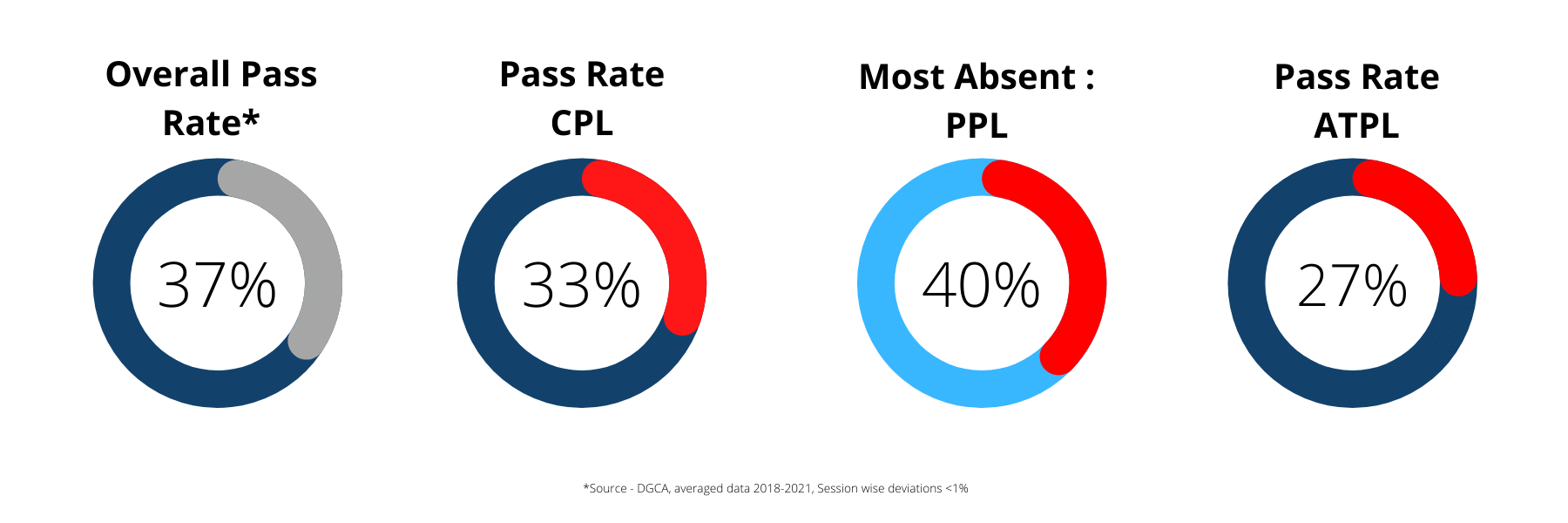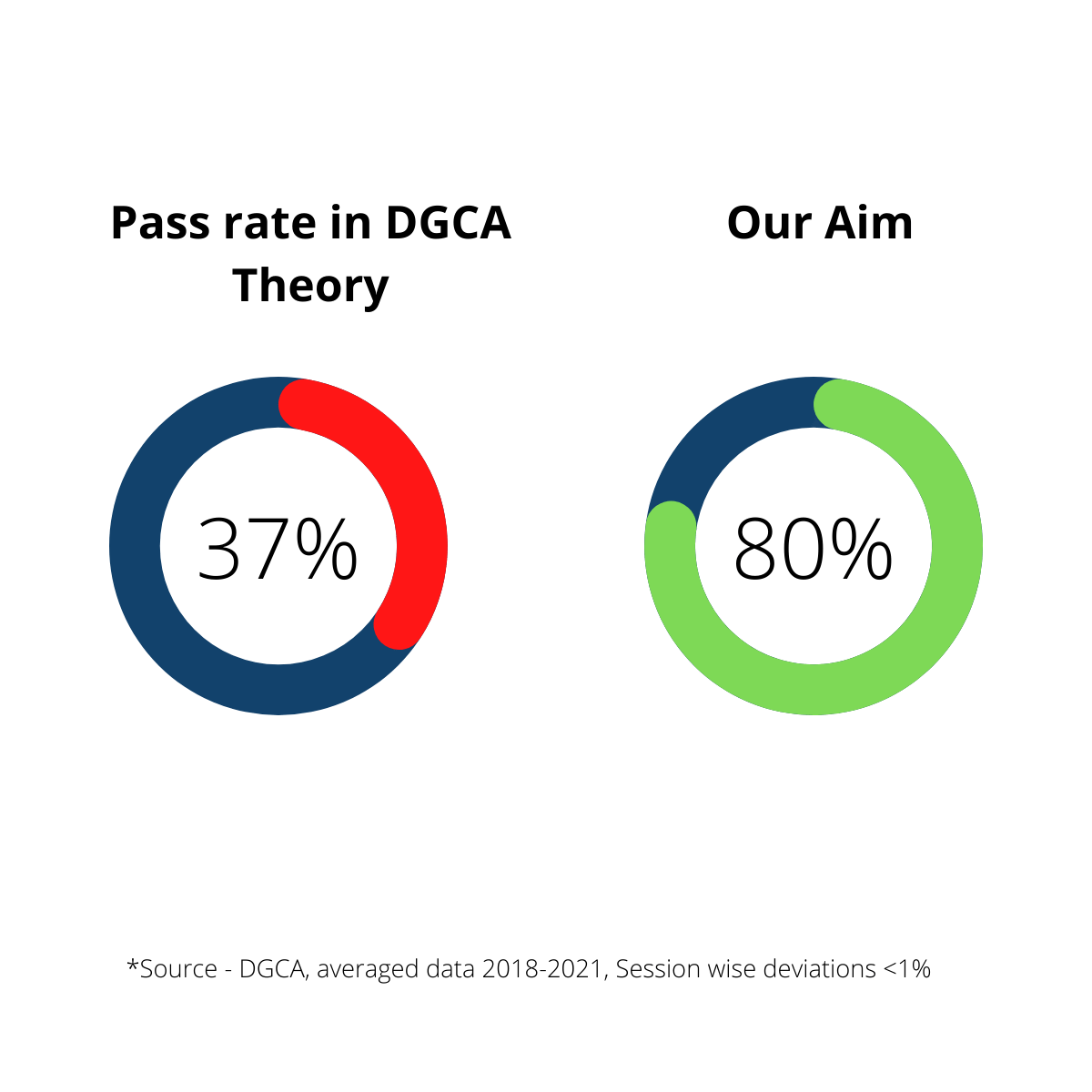Statistically Speaking
Less than 38% of the DGCA Pilot Exam applicants pass their exams. A substantial 12-15% remain absent during the exams. That makes it a failure rate of more than 50%. The failure rate in CPL license is 57%. This figure has been consistent in the last 3years, both during Pre Covid and post covid sessions. A low pass probability affects the career of the pilot since it delays the entire process.
There has to be a reason ?
Let's try to understand it this way. Theory exams for pilot license are meant for a purpose. They are meant to make sure that you possess the necessary knowledge and sense to operate, navigate and communicate safely and efficiently. There are no Gold Medals out there. Theory for pilot licenses is not about academic knowledge but building ability to apply some basic concepts. Unfortunately instead of 'Theorizing the Practice' most people try to 'Academize the Theory' and this results in less than expected examination outcomes. Adding to the problems are the common methods employed by most training academies falls short on the needs of the new generation student.
Our Aim
Apart form the poor exam results there are some other implications of the present norms of training. Flying is something that humans are not designed to do. Which means that our natural mental faculties and physiological design are ill-equipped to handle the requirements of flying which requires quick reflexes and fast decision-making.
Statistically about 70% of all air accidents are caused by Human Errors which are many a times a result of lack of sense of aviation which has gradually been eroded by the increasing levels of automation.
At Winglet, we are not just about knowledge, we are about developing these abilities which would help you even after you clear your exams. Pilots don't need a lot of knowledge, they need an enormous common sense to use the knowledge and resources at their disposal.
While the traditional academic training revolves around 'What & How', we revolve around 'Why' which not only simplifies the understanding of the concept but also helps in developing a critical approach to any situation which is rooted in best practices in aviation.
How we do that ?

The Three Pillars
The first is interactive content to get you started with the concepts which you go through before joining the online classes and visit again after the live classes. This includes interactive books with embedded video lectures to watch, text to read and sample papers to do. You may call it Asynchronous learning in K12 parlance.
The second is "Live Classes" for which we have the most eligible and experienced Faculty who are not only qualified with tons of flying hours but diverse also. The classes are interactive and not PowerPoint presentations. The recordings of your classes are available to you for use in future. Regular Accident investigations and experiences of our guest faculty from airlines add to your competence as an aviator You may Read About Faculty here
The third is Reinforcement and Feedback which we achieve by review sessions. This is done once we have progressed through a set of related topics & includes solving a set of questions and re-enforcing the important concepts. Before the exams you are put through a rigorous workshop where you will solve several timed question papers to get ready for the exams. There are other tools such as adaptive quizzes which improves your learning curve.
Hope it helped !


